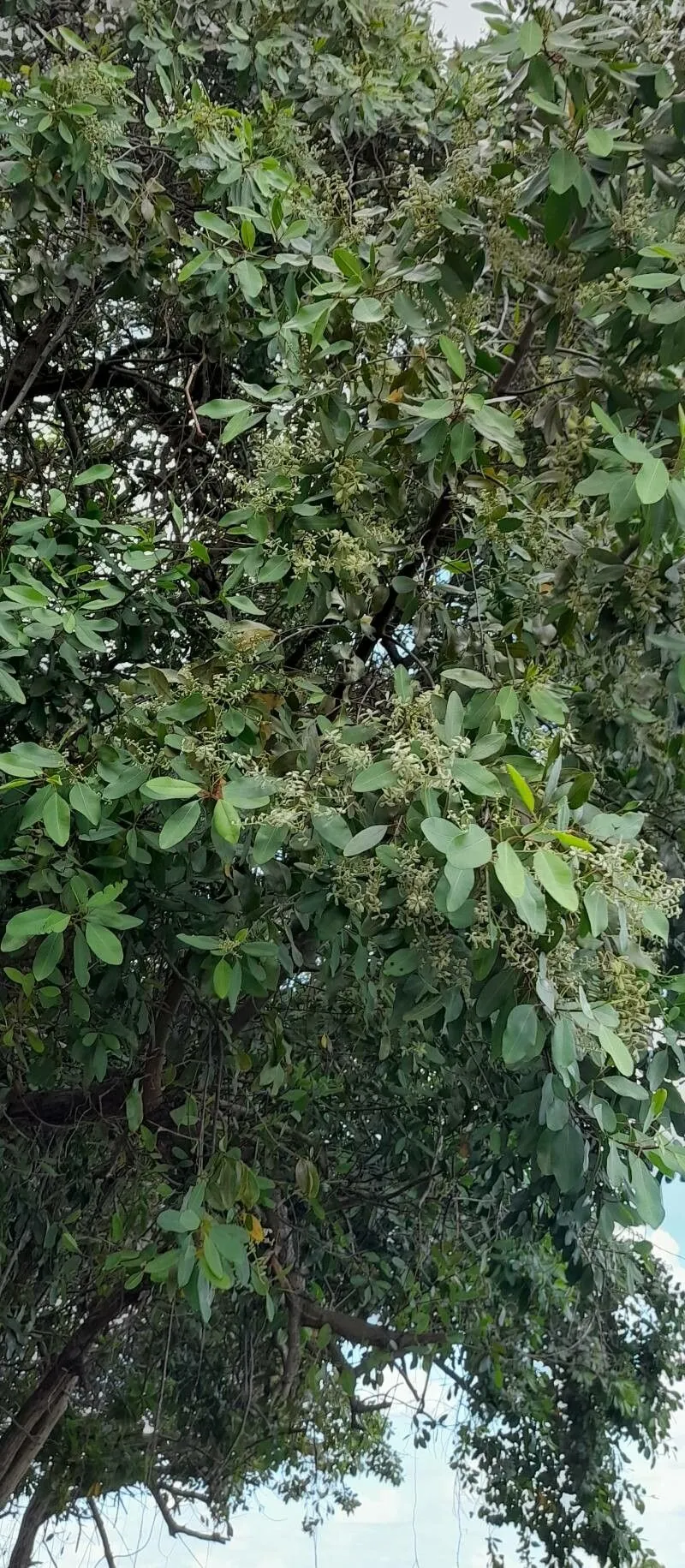
Author: (L.) C.F.Gaertn.
Bibliography: Suppl. Carp.: 209 (1807)
Year: 1807
Status: accepted
Rank: species
Genus: Laguncularia
Vegetable: False
Observations: Trop. & Subtrop. America, W. Trop. Africa to Angola
The White buttonwood, scientifically named Laguncularia racemosa, is a versatile plant belonging to the Combretaceae family. Its natural habitat spans across tropical and subtropical regions of the Americas, extending from the West Tropical Africa to Angola. This wide geographical range illustrates the adaptability of this species, which has become well-integrated into various ecosystems.
A resilient and often overlooked species, the White buttonwood thrives in coastal and estuarine environments where it frequently contributes to the formation of mangrove forests. These habitats play crucial roles in coastal protection, groundwater recharge, and serving as nursery grounds for numerous aquatic species.
Characterized by its dense, somewhat leathery foliage and small white flowers clustered in racemes, the tree provides significant ecological benefits. Its robust root system helps stabilize soil and reduce erosion, while its foliage offers a habitat for various forms of wildlife, including birds and insects. Notably, the flowers of the White buttonwood attract pollinators, further supporting the health and biodiversity of its environment.
The White buttonwood has been formally recognized and described in various botanical literatures, with its entry being significantly noted in “Supplementum Carpologiae” in 1807 by (L.) C.F. Gaertn. Over the centuries, it continues to be the subject of scientific study due to its ecological importance and adaptability in diverse climatic conditions.
Despite its many virtues, the White buttonwood does face threats from habitat destruction and environmental changes, highlighting the need for conservation efforts to ensure its persistence for future generations.
Spa: mangle amarillo, mangle blanco
Por: falso-mangue, mange-mariso, mangue, mangue-amarelo, mangue-branco, mangue-de-sapateiro, mangue-manso, mangue-vermelho, tinteiro, mangue branco, tinteira
Eng: white buttonwood, white mangrove
Nld: witte mangrove
En: White buttonwood, White mangrove
Nl: Witte mangrove
Pt: Falso-mangue, Mange-mariso, Mangue, Mangue-amarelo, Mangue-branco, Mangue-de-sapateiro, Mangue-manso, Mangue-vermelho, Tinteiro, Mangue branco, Tinteira
Es: Mangle amarillo, Mangle Blanco
Taken Jan 12, 2022 by Maarten Vanhove (cc-by-sa)
Taken Sep 24, 2009 by Renato Lima (cc-by-sa)
Taken Feb 24, 2013 by R. Tournebize (cc-by-sa)
Taken Jan 12, 2020 by Bernard Brugalieres (cc-by-sa)
Taken Nov 29, 2021 by Jonathan Rochet (cc-by-sa)
Taken Jun 20, 2022 by Trap Hers (cc-by-sa)
Taken Feb 24, 2013 by R. Tournebize (cc-by-sa)
Taken May 14, 2016 by Thomas Delhotal (cc-by-sa)
Taken May 14, 2016 by Thomas Delhotal (cc-by-sa)
Taken May 14, 2016 by Thomas Delhotal (cc-by-sa)
Taken Jun 26, 2021 by Marzanna Bug (cc-by-sa)
Taken Jun 20, 2022 by Trap Hers (cc-by-sa)
Taken Jun 20, 2022 by Trap Hers (cc-by-sa)
Taken Jan 3, 2021 by Erich🦅 Ju (cc-by-sa)
Taken Nov 29, 2021 by Jonathan Rochet (cc-by-sa)
Taken Jul 7, 2014 by Thomas Delhotal (cc-by-sa)
Taken Feb 9, 2017 by Guy Van Laere (cc-by-sa)
Taken Jul 7, 2014 by Thomas Delhotal (cc-by-sa)
Taken Jun 26, 2021 by Marzanna Bug (cc-by-sa)
Taken Feb 24, 2013 by R. Tournebize (cc-by-sa)
Taken Jun 13, 2018 by Nelson Zamora Villalobos (cc-by-nc)
Taken Dec 14, 2020 by Mélanie Herteman (cc-by-sa)
Taken Nov 29, 2020 by Vieira do Nascimento Paulo (cc-by-sa)
Taken Feb 24, 2013 by R. Tournebize (cc-by-sa)
Taken Feb 24, 2013 by R. Tournebize (cc-by-sa)
Taken Feb 24, 2013 by R. Tournebize (cc-by-sa)
© copyright of the Board of Trustees of the Royal Botanic Gardens, Kew.
© copyright of the Board of Trustees of the Royal Botanic Gardens, Kew.
© copyright of the Board of Trustees of the Royal Botanic Gardens, Kew.
Growth habit: Tree, Shrub
Growth rate: Rapid
Ph maximum: 8.5
Ph minimum: 6.0
Family: Myrtaceae Author: (F.Muell.) K.D.Hill & L.A.S.Johnson Bibliography: Telopea 6: 402 (1995) Year: 1995 Status:…
Family: Rubiaceae Author: Pierre ex A.Froehner Bibliography: Notizbl. Bot. Gart. Berlin-Dahlem 1: 237 (1897) Year:…
Family: Sapindaceae Author: Koidz. Bibliography: J. Coll. Sci. Imp. Univ. Tokyo 32(1): 38 (1911) Year:…
Family: Asteraceae Author: A.Gray Bibliography: Pacif. Railr. Rep.: 107 (1857) Year: 1857 Status: accepted Rank:…
Family: Fabaceae Author: Medik. Bibliography: Vorles. Churpfälz. Phys.-Ökon. Ges. 2: 398 (1787) Year: 1787 Status:…
Family: Aspleniaceae Author: (Cav.) Alston Bibliography: Bull. Misc. Inform. Kew 1932: 309 (1932) Year: 1932…